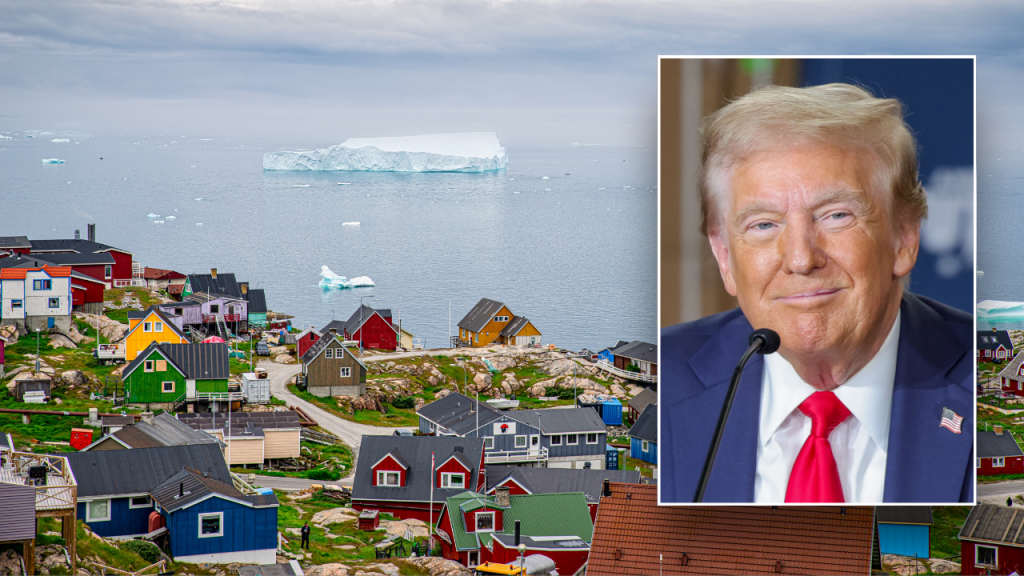Former President Donald Trump has reignited his unconventional pursuit of Greenland, using social media to amplify his calls for the United States to acquire the autonomous Danish territory. This renewed interest comes as his son, Donald Trump Jr., prepares for a personal trip to Greenland, though he is not scheduled to engage with government officials. The former President’s persistent focus on Greenland, first surfacing in 2019, has moved from the fringes of political discourse back into the spotlight, sparking renewed debate and curiosity about his motivations and the feasibility of such an acquisition.
Trump’s latest pronouncements center around a video shared on his Truth Social platform, depicting a Greenlander wearing a MAGA hat expressing a desire for the U.S. to “buy” Greenland. The individual in the video claims a desire to be free from Danish governance, citing perceived exploitation of Greenland’s mineral resources. Trump seized upon this video, framing it as evidence of grassroots support for his vision of Greenland becoming part of the United States. He underscored his intention to visit Greenland in the near future, highlighting the island’s natural beauty and the perceived benefits of American stewardship.
The former President’s revived interest in Greenland comes amidst other political developments, including Canadian Prime Minister Justin Trudeau’s resignation and Trump’s own pronouncements on reversing Biden administration policies. These concurrent events create a complex backdrop for Trump’s Greenland campaign, potentially influencing public perception and political discourse. His pronouncements blend geopolitical strategy with personal conviction, creating a unique and often unpredictable political narrative.
Trump’s rationale for acquiring Greenland oscillates between strategic considerations and economic arguments. He has consistently emphasized the island’s strategic importance, citing its location and potential for military and resource development. He also portrays the acquisition as a mutually beneficial arrangement, suggesting that Greenland would prosper under American ownership and protection, while the U.S. would gain a valuable asset. His economic arguments often revolve around the notion that Denmark is losing money by maintaining its relationship with Greenland, implying that the U.S. could offer a more financially viable partnership.
However, Trump’s Greenland ambitions have consistently been met with resistance. Greenland’s Prime Minister Múte Egede has reaffirmed Greenland’s interest in independence from Denmark, but not in becoming a U.S. territory. Egede’s position reflects a broader sentiment within Greenland, favoring self-determination over a shift in colonial powers. This underscores the complexities of Greenland’s political landscape, where the desire for autonomy and control over resources is a central theme, but not necessarily aligned with Trump’s vision.
The international community has largely viewed Trump’s Greenland proposals with bewilderment and skepticism. His 2019 attempt to purchase Greenland was met with outright rejection from Denmark, prompting a diplomatic spat. The renewed push for Greenlandic acquisition is unlikely to be received any differently, highlighting the disconnect between Trump’s personal ambitions and the realities of international diplomacy. The episode raises questions about Trump’s understanding of international relations and the complexities of territorial sovereignty. While he frames the potential acquisition as a real estate transaction, Greenland’s status as a self-governing territory within the Kingdom of Denmark renders such a simplistic approach untenable. The repeated pronouncements on Greenland raise questions about the former president’s foreign policy priorities and his understanding of international law and geopolitical realities.

